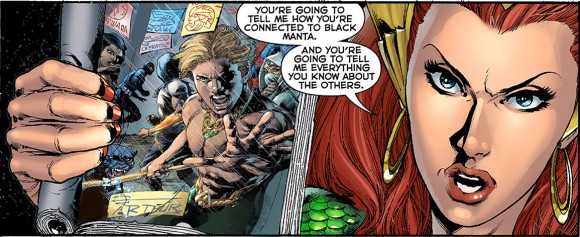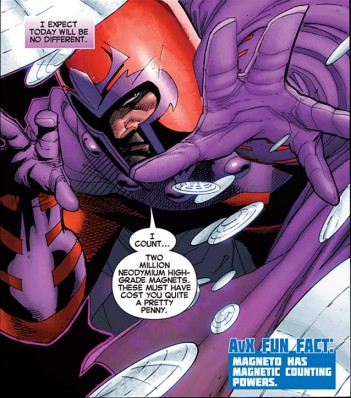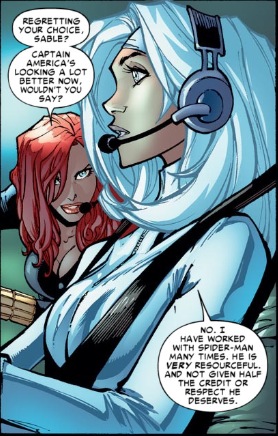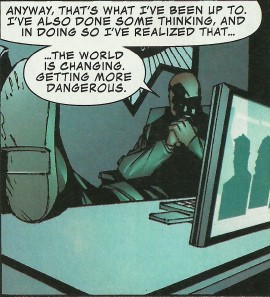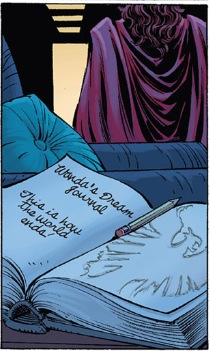This was going to be a simple round-up of a few recent posts on DC’s Before Watchmen, but ha ha, I realized I still have stuff to say. Sorry.
The other day, out in the hardest part of the tweets on the wrong side of the twacks, a comics pro tweeted that the conventional wisdom that sequels or prequels don’t affect the source material isn’t true, because now that he was aware of Before Watchmen, it was impossible to read Alan Moore & Dave Gibbons’s Watchmen without that kicking around in the back of your head.
without that kicking around in the back of your head.
He’s right. Before Watchmen colors what came before it. Nothing exists in a vacuum. Mel Gibson outed himself as being cartoonishly racist and bigoted (and somehow so ultra-Catholic that he thinks the Pope isn’t Catholic enough, or something, which is definitely some supervillain-type thinking) has definitely changed Lethal Weapon , hasn’t it? If I buy that new box set, I’m putting money in the pocket of somebody who told his old lady that he hopes she gets raped by a pack of niggers. WHOA! Am I down with that?
, hasn’t it? If I buy that new box set, I’m putting money in the pocket of somebody who told his old lady that he hopes she gets raped by a pack of niggers. WHOA! Am I down with that?
And so it goes with Before Watchmen. A connection has been made, and even if you consciously put it out of your head, the fact that Before Watchmen exists is still there. The creators’ rights skullduggery, Moore & Gibbons being cheated out of profits, the creators involved who’ve been throwing ill-advised bombs… it absolutely affects the work. More than that, it affects other work. I was digging Spaceman by Azzarello and Risso. I like Amanda Conner’s work. Darwyn Cooke’s adaptations of Richard Stark’s Parker novels are more or less my favorite comics each year. I got that Martini Edition — have you seen that thing? It’s wonderful, easily the best packaged comic I’ve bought in ages. The next book, Parker: The Score
— have you seen that thing? It’s wonderful, easily the best packaged comic I’ve bought in ages. The next book, Parker: The Score , is probably one of my top 5 Parker novels. I’d like to read it.
, is probably one of my top 5 Parker novels. I’d like to read it.
But Before Watchmen makes me stop and start thinking about ideologies and differences of opinion, instead of the work. It doesn’t make me think that their work sucks. That’s stupid. They’re as talented as ever. But, like my newly complicated relationship with Frank Miller’s public persona and his work, I’ve got to think this through instead of just hitting pre-order on Amazon. Which sucks. “Ignorance is bliss,” right? Ugh.
Anyway, three must-read posts today. I have a round-up of stuff I’m reading & watching, but that’ll keep til tomorrow.
–Chris Roberson was interviewed by Tim Hodler over his… his whole situation, I guess. It’s a great interview. I’m super, super touched that I played even the smallest of small roles in him publicly parting ways with DC.
I can’t really summarize it, except to say that Chris has clearly thought all this stuff through and has a good head on his shoulders. I agree with him, obviously, and you may not, but I don’t think he says anything controversial or false. Please read it. It’s good, and a nice look at what it’s like making corporate comics. He spotlights Kurt Busiek’s fantastic idea about retroactive equity for creators, which I am 100% behind. I’m tired of hearing that the people who created characters I love are destitute and left begging for money every time they get sick. That’s pathetic, and a true failure of the comics industry and basic kindness. You made millions of dollars off a movie? Cool, then you can afford to chip in on the hospital bill of someone who helped turn a kernel of an idea into a comic that then became a movie.
Oh, and Roberson’s bit about there being no Creators section on DC’s website really says it all, don’t it? Welcome to Corporate Comics, 2012.
–Heidi Mac chimes in on Before Watchmen from an angle I hadn’t considered. I’ve had email conversations about this recently, actually, and they were eye-opening. I was born in 1983. I didn’t read Watchmen until… I dunno, 2004? I knew it was a Great Work, like I knew that Camus’ The Stranger or Dostoyevsky’s The Brothers Karamazov are Great Works when I first read them. I didn’t know the actual history of the Great Work, just that I Needed To Read This.
Finding out that DC was pitching Watchmen as a triumph for creators’ rights while the entire community was rallying behind Jack Kirby feels like a sick joke in the light of Before Watchmen. At the time, it was, but then they saw dollar signs and whoops, sorry mates. Before Watchmen is a project that basically flies in the face of any type of advance in creators’ rights. It’s about prizing characters & concepts over creators, strip-mining history in an attempt to shore up today. In that light, Before Watchmen is the ultimate betrayal of what DC once claimed to stand for. It’s taking an icon for the creators’ rights movement and turning it into more grist for the mill.
It’s amazing how each new wrinkle from people who were around when Watchmen was making history and each new interview from DC Comics staff makes me like this project less and less. There’s so much… not lying, exactly, but dissembling and empty hype going on.
The Spacemen example is brutal, too. The only preview DC put out for that series was for the second issue? Even though that exact same team was hot off the best-received Flashpoint tie-in? Who is running things over there?
–Tom Spurgeon weighs in on the Roberson interview. Here’s a quick quote that I think is pretty good and relates well to Heidi’s point:
As much as you and I might shake our heads and do the Little Rascals surprise face when we hear someone say some of the things that have been said in support of and defense of Before Watchmen or the Superman lawsuit, imagine how distressing it would be if these were your creative partners, the people on which you hoped to build a foundation for a fulfilling life. The humor in the title is that Watchmen was seen as a creator-rights forward title with ambition; this new thing is certainly reflective of a time before that.
This is also must-reading.
True facts: I would have never written about Before Watchmen if not for Spurgeon. I don’t remember talking about it with him at Emerald City Comicon, but we probably did. But really, what prompted my posts was reading his “Sometimes They Make It Hard To Ignore Creators Issues”. Specifically, this: “I’m not sure I have much of a point here, except maybe please look at this. Look at this.”
That sparked something in me. “Look at this.” I took a look around to see what other people were saying and I realized that the sum total of Before Watchmen opposition online was Spurgeon, Eric Stephenson, and Abhay’s wonderful tumblr. I mean, we all had drive-by jokes on Twitter or in passing in posts… but organized dissent? The sort of thinkpieces that make comics internet interesting and valuable to me as a reader? Zilch.
So I looked at it. I sat down and thought about how I felt and dug up as much as I could on the history and I sat down and wrote The Ethical Rot Behind Before Watchmen & Avengers in maybe an hour and a half, if not an hour, on that Friday. I sent it to a few friends to read over and point out my mistakes and I edited it over the weekend. In between, though, JMS said something stupid about Alan Moore and I threw a jab. One jab turned into two. Two, eventually, turned into five posts about creators’ rights and Alan Moore.
It’s important that we talk about this, whether we is comics press or fans or creators, because no one else is going to. There’s something to be said for an objective press, sure, but part of the role of the press is looking at what the news actually means. Looking at trends, at history, at contradictions, at controversies. The comics press isn’t journalism, but we’re part of that same family tree.
So pointing out that there’s chicanery going on with Before Watchmen or how a company treats creators isn’t negativity. It’s doing our job. It’s shedding a light over wrongdoings that some people would rather were left in the past and unsaid. I mean, yo, if someone is lying in public, you nail them to the wall. You point that out. You don’t hem and haw about whether ethics matter. (They do, and you’re a moron if you think otherwise.) You look at the situation, you consider your own personal values, and you choose your position. You pick whatever feels right for you. There are no easy answers, no. But there are answers. Basic ones.
You like Before Watchmen? Fine! Cool. I get it. You don’t? Also cool! But it is vital that we talk out our positions on this issue. It is very much a creators’ rights issue, something that will have an effect on how the Big Two do business. If we can show them that we prefer that creative types be treated like people, we have a better chance of having a better, healthier comics industry.
So I want to publicly thank Tom Spurgeon for forcing me to put pen to paper, and Shannon O’Leary, writer of the PW piece and the person who asked the tough questions at the LA Times Festival of Books, for showing me that speaking out can actually have an effect in the real world.
I would like it very much if DC and Marvel had to answer as many questions about creators’ rights this year as they do about dumb plot twists and fan-favorite characters. If they dodge the question, they dodge it. But asking the question, and pulling apart their dodge, is honest work. It’s inside baseball, sure, but it’s also necessary. These questions need to be asked.

— “It’s harder than a Spanish test” is about as far as I’d get there — but I can pull it apart and dig into it in a way that I can’t do with art.



